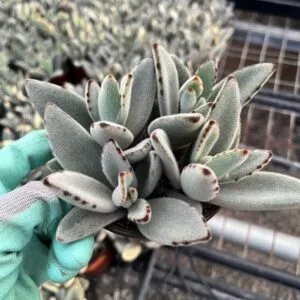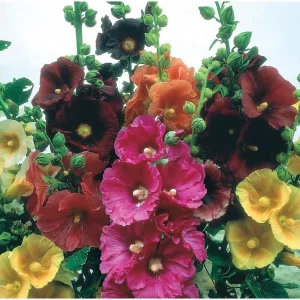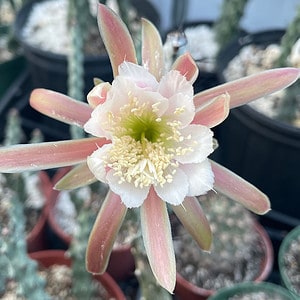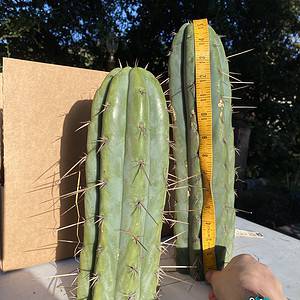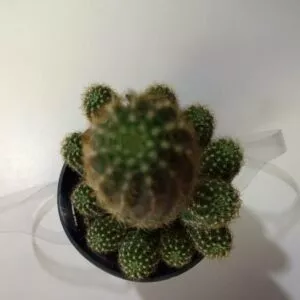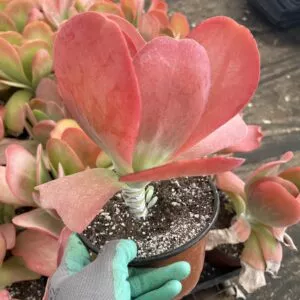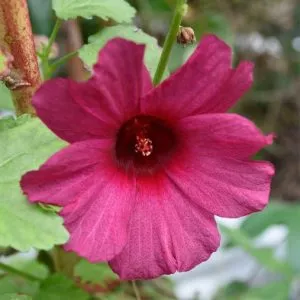No products in the cart.
Table of Contents
If you have ever wondered how to get peace and harmony in the home, you have arrived at the right place. Nothing gives more inner peace than having the Chinese elm bonsai tree standing in the house.
Yet, when it comes to caring for them, it is not an easy task. So, today we will assist you with caring for your first bonsai tree in the art of bonsai.
What is The Chinese Elm Bonsai Tree?
The word bonsai means mini tree or ornamental shrub. These trees are full of life, even with their small stature. The tree originates from China, and while Virginia State University says the bonsai art developed in Japan, it remains debatable.
The Chinese elm is prevalent in all the bonsai trees, but other elms also work well for a bonsai purpose. Sometimes people get confused with Japanese zelkova. The Chinese elm develops a scaling bark with orange patches compared to the zelkova, which remains smooth.
The Chinese elm bonsai also has a glossy leaf that is narrower and pointed. Another tree resembling this is the Siberian elm, native to Middle Asia, Northern China, and Eastern Siberia. The tree has double-toothed leaves with furrowed bark.
While the Chinese elm comes from China and Southeast A, when grown in its native environment, it can reach up to 70 feet in height.
Chinese Elm Bonsai Trees Care
Now that we have some of the confusement out of the way, it helps to know the basics before caring for your tree. We have compiled a detailed list of everything you need to know about caring for this bonsai tree.
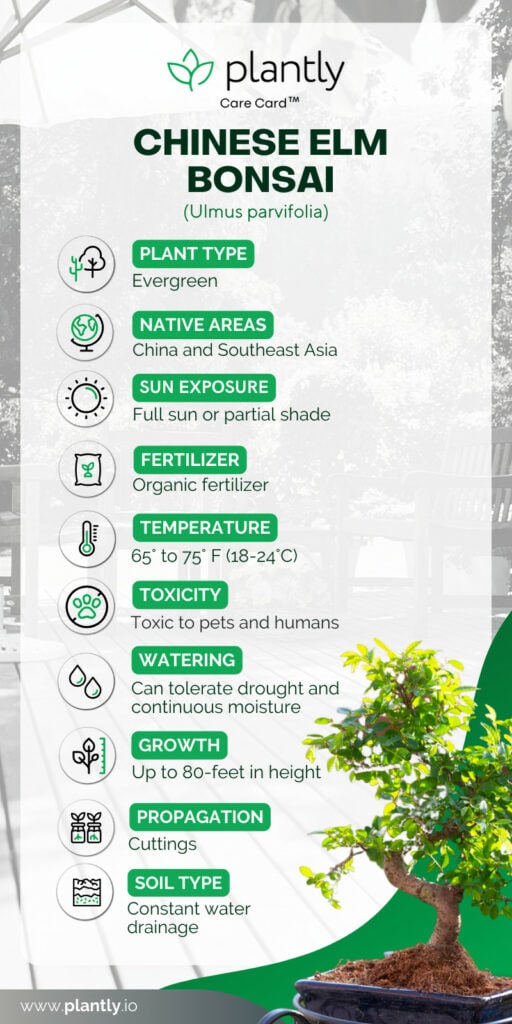
Now, let’s look a bit closer at this Chinese elm bonsai tree.
Soil Necessity
The soil for your bonsai tree may seem simple, but it is not. Luckily we are here to help. The potting mix needs to be correct, and your regular potting mix won’t do. Your tree needs constant water drainage to prevent wet feet in the roots. Still, your tree needs to be hydrated, and soil with aeration is also required.
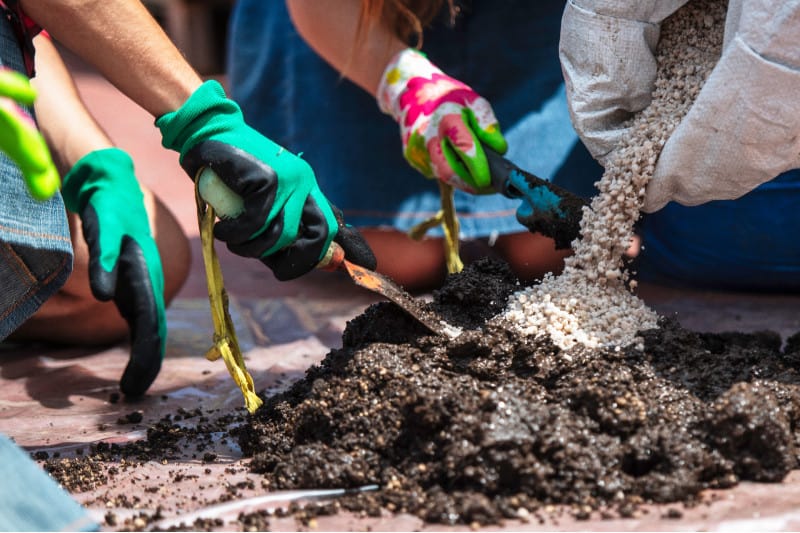
You can buy a particular bonsai tree soil or take a cheaper option and make it yourself. Here you can make an organic or inorganic potting mix. When you create an organic one, you need to add peat moss and conifer bark.
While the inorganic one is made up of lava rock, organic compost, and fired clay. Or you can also make one with lava rocks, pumice, and sifted akadama clay. So the important thing is well-draining soil.
Chinese Elm Bonsai Tree Light
Your Chinese elm bonsai needs a lot of light to survive. Here you have two choices placing it at a window sill on the west or south-facing side. The best is at a south-facing window allowing it to get enough sun.
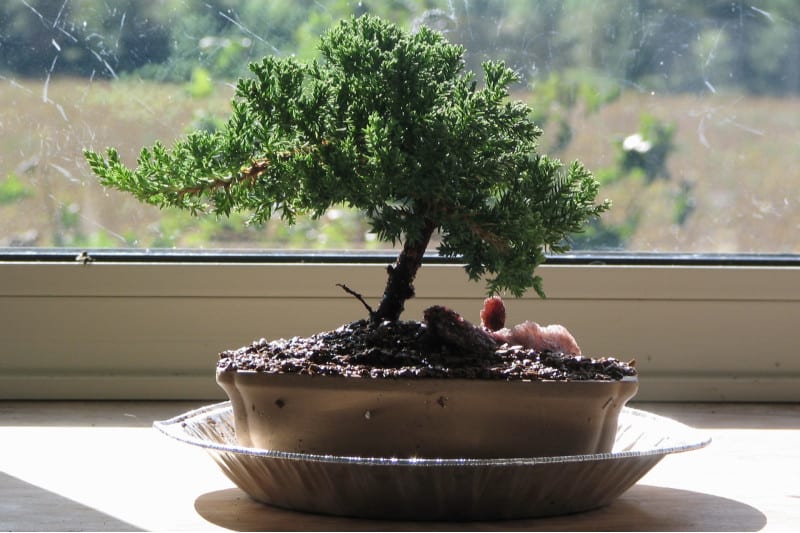
Another option is using artificial light. Placed at a window, it does not always get direct sunlight. Further, if using growth lights, make sure your tree has enough ventilation for the heat to radiate down as it can get hot. Using artificial lights, you can provide it with up to 12 hours of daylight.
But if lights are not an option, direct morning sunlight is ideal, treating and treating them as an outdoor plant during the summer would be ideal. Yet, in warmer months, prevent direct afternoon sun as it can burn the leaves.
Watering Your Chinese Elm Bonsai Trees
Compared to other bonsai trees, the Chinese elm prefers moist soil with drying time in between watering. The best method is to stick your finger in the ground about a half-inch. If there are no moisture felts, then it is time to water your tree.
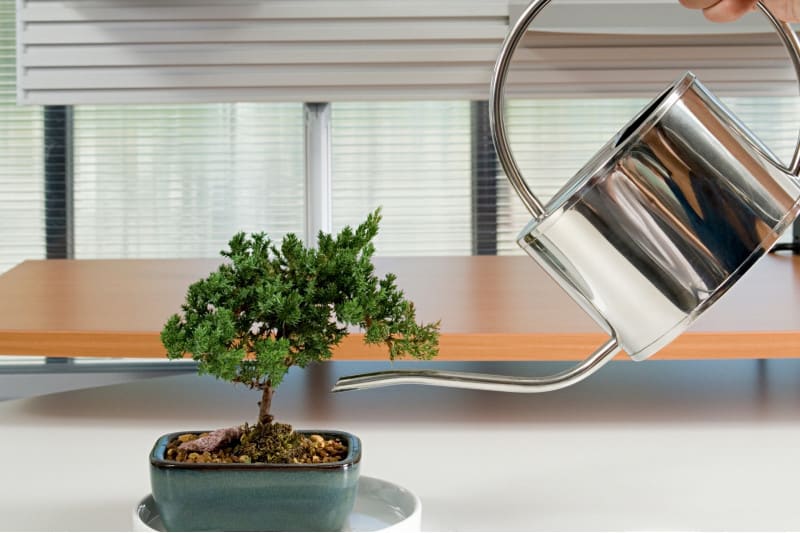
But never let the soil completely dry between watering. In the winter months, it needs less water compared to spring and summer. It also depends on the location and climate of where you live.
So watering cycles can vary, and best to avoid sticking to a watering schedule. Another great thing to use is a water mister, which helps with humidity.
Also, when you water your Chinese elm bonsai tree, give it enough water and wait for it to drain through the drainage holes. Doing this will help prevent root rot in your small bonsai tree.
Temperature and Humidity Necessity
The best temperature settings for your Chinese elm bonsai tree is between 65°F to 75°F (18°C – 24°C) to thrive during the day. At night your indoor bonsai tree temperature should be between 55°F to 60°F (13°C – 16°C). Yet in colder months, it is crucial to keep a temperature between 50°F to 70°F (10°C – 21°C).
This is because your elm tree roots are sensitive when it comes to different temperatures. So it helps to keep them moist in hot months and a bit drier in cold months. When it comes to indoor Chinese elm tree care, the humidity needs to be high.
The best humidity level is between 40-60% for it to be happy. One way to achieve this is using a pebble tray with water. All you need is a tray big enough to fit your Chinese elms pot. Then, you can fill the tray with pebbles and water to place beneath your tree.
What happens is that the water evaporates, creating the best humidity for your elm trees. You can also mist your tree a couple of times per day, and best to feel the leaves if it need misting.
In stock In stock In stock In stock
$9.00
Sold By:
Cacti and Exotica
Kalanchoe tomentosa—Panda Plant
Rated 4.98 out of 5 based on 59 customer ratings00
Sold By:
Cacti and Exotica
Free Shipping
$9.59
Sold By:
CZ Grain
Giant Danish Holyhock Seeds
Only 886 available and it’s in 1 people’s basket Rated 4.60 out of 5 based on 156 customer ratings00
Sold By:
CZ Grain
$19.95
Sold By:
Orchid Stuff Plus
$24.95A beautiful Royal Palm in a 4 inch pot.
Only 1 available and it’s in 1 people’s basket Rated 5.00 out of 5 based on 1 customer rating00
Sold By:
Orchid Stuff Plus
$18.00
Sold By:
Beauties & Beasts
Cactus – Monvillea spegazzinii
Only 2 available and it’s in 1 people’s basket Rated 4.83 out of 5 based on 24 customer ratings00
Sold By:
Beauties & Beasts
Chinese Elms Fertilizer
As your elm is an indoor bonsai tree, it does not have the same room to spread its roots as ones growing outside. Hence, you must feed your tree all year round for the best Chinese elm bonsai care. But you need not supply older trees that much compared to younger trees.
For an ideal fertilizer, it helps to use a low-strength liquid fertilizer or a slow-release granular feed. If you only received your Chinese elm now, do not feed it for the first week. Instead, give it some time to settle into its new environment.
Chinese Elm Bonsai Trees Propagation
When it comes to having a bonsai tree, you always want to make sure you have a spare one, right. Well, you can by using cutting propagation. We know that the Chinese elm bonsai care takes time but having another one helps if something happens to go wrong. Further, the most enjoyable part is growing and trimming the tree. Yet, when propagating, do it in spring or summer.
- When you trim and prune your tree, it is the right time to get some cuttings. It would be best if you groomed your tree to give it that classical umbrella shape, right. First, of course, cut about six inches in length with at least three nodes or leaves attached. Never use scissors and only clippers.
- Trim off the bottom leaf towards the end up of your trimming. Now cut the bottom at a 45° angle.
- Get your pot together and lay the soil mix on the bottom.
- Place the bottom section of the cutting an inch deep in the ground and make sure it is standing up straight. If it does not want to stand straight, it helps to use a straw and tie it with string or wire.
- Next, place your cutting in a shaded spot covered with a plastic bag to keep in the moisture and help it root. When the soil is close to dry, you can water it.
- You should notice your bonsai tree rooted in a month.
- Remove the bag and provide your tree with ventilation.
USDA Growth Zone
The Chinese elm can survive in hardiness zones five to nine. These small trees grow typically up to 70 feet tall outside with a wide-spreading crown formed by the delicate branches.
Potting and Pruning Your Bonsai Tree

If you want to freshen up the soil and repot your bonsai tree, it is best to do this in mid-summer. You can do this when you notice the roots are not able to spread anymore. On average, this happens every three years.
Another important thing with young trees is to prune and train them to maintain the right shape. Doing this encourages new growth, removing the small branches, new shoots, and buds. You can prune your Chinese elm all year round, allowing new shoots to develop.
Further, you can trim back two or three leaf pairs. Another vital thing is wiring your bonsai tree, and you do this to the branches at all times. Yet, only do this once the shoots become woody.
Bonsai Varieties and Similar Plants
The Chinese elm is not the only tree you can use as a bonsai tree, and the different species will blow your mind. Here are some of our favorites.
Ficus benjamin
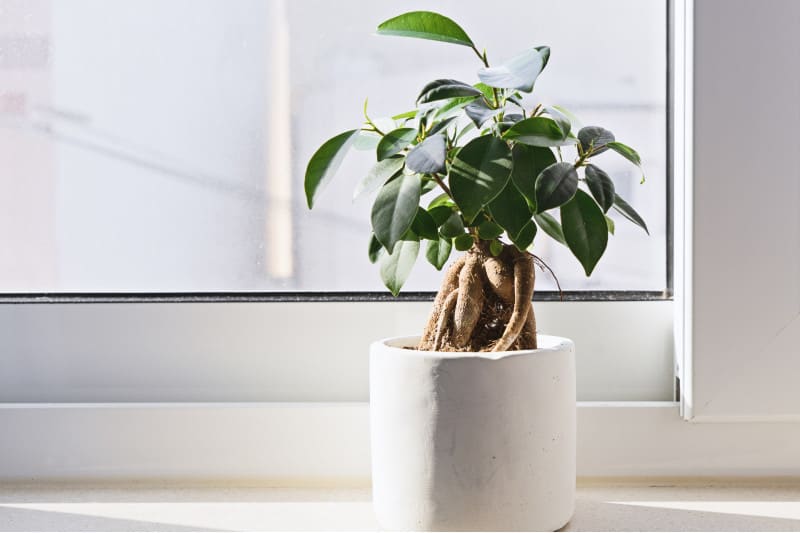
This is a famous bonsai tree, and taking care of it is pretty straightforward. The tree is ideal for beginners, but they get injured fast and can take a long time to heal.
Serissa japonica
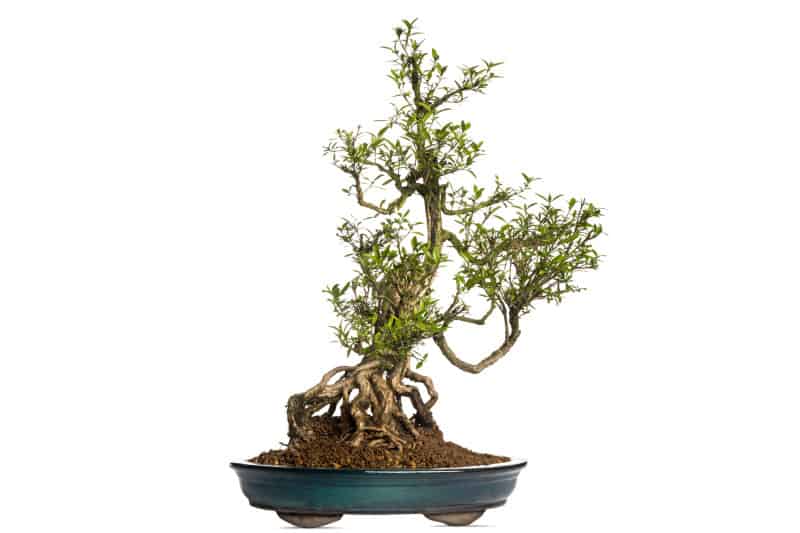
The tree is known as the snow rose and blooms gorgeous flower in spring. In addition, you will find tons of small flowers over the tree.
Shcefflera arboricola
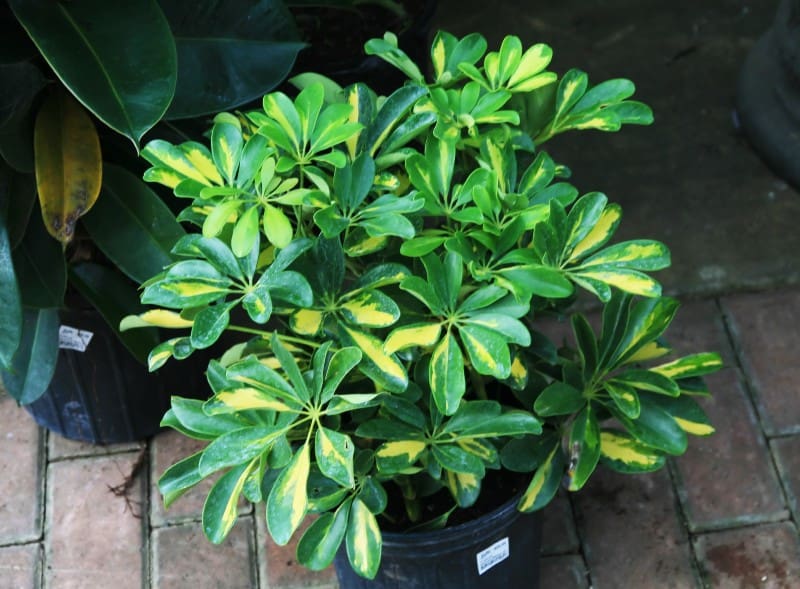
The dwarf umbrella tree has leaves that hang over, looking like an umbrella. But the sap from this tree is very unhealthy for pets.
Chinese Elm Bonsai Diseases & Pests
Your elm bonsai can become the home of several pests invading it. Here are some of the insects to keep an eye out for:
- The aphid is a pest that is hard to see and has a green or yellow color. Having these insects in large numbers can kill your poor tree.
- The mealybug is another insect that eats the leaves and hides underneath the foliage.
- Whiteflies and spider mites are also a concern, and you see them sitting on the leaves sucking away the nutrients.
To get rid of these insects, you can use soapy water and a cotton ball to wipe the leaves and may need to be repeated. Or you can use a mix of water and isopropyl alcohol to kill them. Another solution is to use neem oil spray as well.
Lastly and most importantly, a tiny critter that can cause devastation is the Dutch elm disease. It is caused by a fungal pathogen spread by the elm bark beetle when feeding. The beetle spreads the disease through the root grafts, and the only way to protect your tree is with a fungicide injection.
Frequently Asked Questions
Overwatering or underwatering is the most likely cause of your Cissus discolor dropping leaves. Low humidity might also create this issue or shock. So, have a checklist of the symptoms and point out the possible treatment.
Leaves turning yellow can be the cause of major pruning and wiring. Also, when you do vast amounts of structural changes to your tree, it can cause stress leading to leaves turning yellow and falling off.
You may find your Chinese elm growing up to 36 inches of height per season as it is a rapidly growing tree. So when grown outside, it can reach up to 70 feet in height in 15 years.
The Chinese elm is the best if you start with a bonsai tree. It is an adaptable and forgiving tree with small leaves that are serrated.
With appropriate care growing as bonsai trees or outdoors, it can reach the age of 50 years and longer.
The bonsai tree can grow at great distances planted outdoors, and the roots grow close to the soil surface and can lift sidewalks.
Whether you want to buy, sell or simply reach out to other plant enthusiasts, Plantly is the right place to be!
Only 1 left in stock In stock In stock In stock
Free Shipping
$44.00
Sold By:
Earthling Botanical
Trichocereus Peruvianus Cuttings 2 Pack
Rated 5.00 out of 5 based on 34 customer ratings00
Sold By:
Earthling Botanical
$11.99
Sold By:
Succulent Oasis
Cactus Plant Medium Chamaelobivia “Rose Quartz”
Rated 4.84 out of 5 based on 352 customer ratings02
Sold By:
Succulent Oasis
$25.99
Sold By:
Cacti and Exotica
Kalanchoe | Paddle Plant | Flapjack
Only 9 available and it’s in 1 people’s basket Rated 4.98 out of 5 based on 59 customer ratings00
Sold By:
Cacti and Exotica
Free Shipping
$4.95
Sold By:
SunSoul Plants
$6.95Brown Indian Hemp Hibiscus Seeds – 15+ seeds
Only 20 available and it’s in 4 people’s basket Rated 4.87 out of 5 based on 98 customer ratings00
Sold By:
SunSoul Plants
